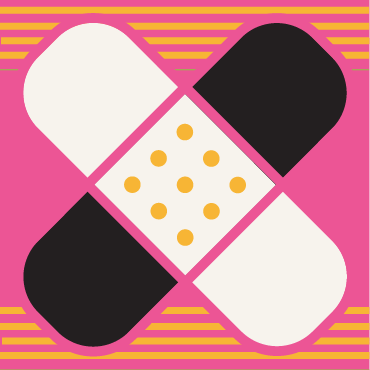HLTH 2025: What healthcare marketers need to know about the AI-driven care shift

HLTH 2025 made one thing clear: healthcare has officially moved from theory to traction. For marketers, that means your stories, strategies, and evidence frameworks must align with how healthcare is now delivered, experienced, and measured.
TL;DR
- AI is now ambient, not abstract. Marketers must explain automation’s role in improving clinician time and patient safety, not just efficiency.
- Home-based care is redefining loyalty. Programs that keep patients at home are driving new partnership stories for payers, providers, and tech.
- Medicare Advantage turbulence is real. Plan changes in 2026 will disrupt continuity of care, and communication will make or break trust.
- GLP-1 coverage remains complex. Clear, credible messaging can prevent misinformation and position your brand as a guide, not a megaphone.
What are the key healthcare marketing trends from HLTH 2025?
HLTH 2025 signaled that healthcare transformation is no longer theoretical; it’s operational. For marketers, that means keeping pace with the realities reshaping care delivery and patient expectations, from AI at the point of care to home-based models and Medicare disruption.
1. AI in the visit: From concept to care partner
Hospitals and clinics are rapidly adopting ambient AI tools that listen to visits, draft clinical notes, and flag care gaps in real time.¹ This technology gives clinicians back hours once lost to charting, but it also introduces a new layer of communication responsibility for marketers.
Your task: turn technical capability into meaningful narrative. Patients don’t care about natural language processing (NLP) models; they care about whether their doctor is truly listening.
 PRO TIP
PRO TIP
Pair your AI messaging with a clear governance storyline, human in the loop, source transparency, and audit trails to build credibility and reduce fear. See our AI approach for more guidance.
2. Home-based care: The new battleground for brand trust
Health plans and providers are investing in aging-in-place models that blend remote patient monitoring, nurse visits, and caregiver messaging.² Marketers who position these programs effectively can own a powerful narrative: empowerment through proximity.
The data is persuasive. Keeping the top five percent of high-risk seniors at home can reduce hospital admissions, cut emergency department use, and improve patient satisfaction.² But numbers alone don’t build trust. Clarity does.
 PRO TIP
PRO TIP
Create modular content for clinicians, caregivers, and patients, so each group understands what home-based care means for them. Map every message back to a tangible outcome: more days at home.
3. Medicare Advantage: Prepare for the 2026 messaging crossroads
Several plans are tightening benefits or changing provider networks in 2026.³ For marketers, this is more than policy news. It’s a communication challenge. When patients switch plans, they risk losing continuity in medications, authorizations, and follow-up care.
Healthcare brands that get ahead will focus on coverage clarity. Simple, patient-friendly guidance can prevent frustration and reinforce trust.
 PRO TIP
PRO TIP
Build an internal coverage and benefits clarity map that equips front-line staff with the right language for patient conversations. Test those scripts in real calls or portal chats before you publish them.
4. GLP-1 medicines: Messaging the middle ground between hype and help
The GLP-1 wave shows no sign of slowing. Medicare covers these drugs for diabetes and some comorbid conditions, but coverage for obesity alone remains limited.⁴ Safe use in older adults requires nuanced communication, screening for frailty, explaining side effects, and setting cost expectations.
Your opportunity: position your brand as the source of measured optimism. Don’t overpromise; clarify. Don’t dramatize; educate.
 PRO TIP
PRO TIP
Co-create a risk-benefit brief for your organization: What it does, who it helps, what to watch. Add a checklist of questions patients can ask their insurance provider. It’s empathy and evidence on one page.
5. For med-tech and device brands: Evidence is the new edge
Hospitals and payers now expect real-world evidence (RWE) to prove post-market performance.⁵ Claims like “reduces staff burden” or “improves throughput” need clear data behind them. In other words, integration alone won’t close the sale; evidence will.
 PRO TIP
PRO TIP
Audit your message stack using an Evidence Spine Framework: organize claims by clinical, operational, and financial proof points. See how we help teams design credible narratives with our article on Brand-Aware Intelligence for B2B marketing.
Key takeaway
FAQs
What is the biggest healthcare marketing takeaway from HLTH 2025?
Marketers must translate complex AI, home care, and policy shifts into clear, actionable narratives that maintain patient and clinician trust.
How should healthcare marketers approach AI communication?
Lead with purpose, not hype. Explain what AI helps clinicians do better, and back every claim with a human-in-the-loop message.
What does “home-based care” mean for brand storytelling?
It creates space for patient-centered storytelling, where care continuity, caregiver collaboration, and “days at home” replace clinical jargon.
How can medtech marketers prove product value?
Build messages around real-world evidence and buyer priorities, staffing, efficiency, and patient outcomes, not just product features.
Sources:
1 Becker’s Hospital Review. “Abridge, Wolters Kluwer Lean Into Real-time Clinical Decision Support.”
2 Springer. “Home-Based Primary Care (HBPC): Aging in Place in 2025.”
3 Reuters. “UnitedHealth to Exit Medicare Advantage Plans in 109 US Counties.”
4 FierceHealthcare. “CMMI Considers Weight Loss Drug Coverage Pilot.”
5 U.S. FDA. “Real-World Evidence.”


